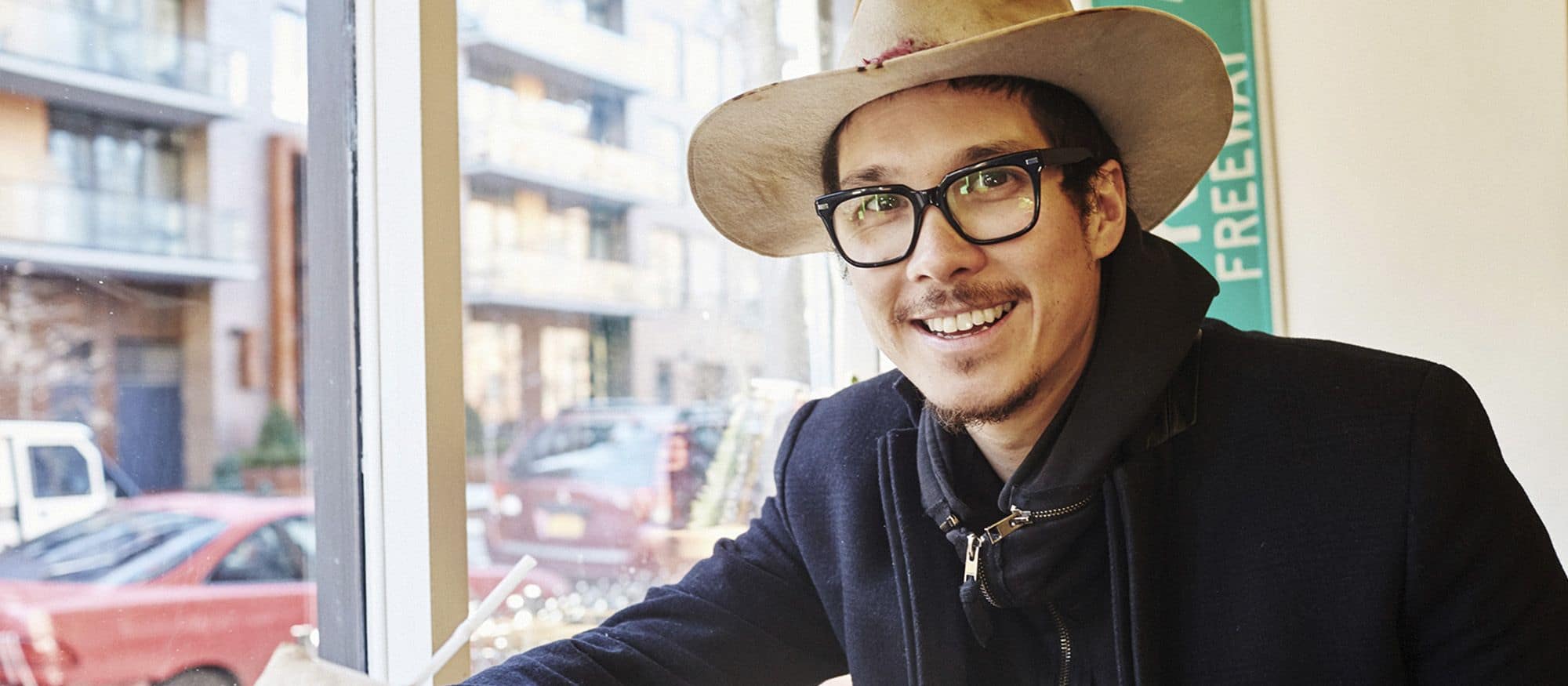
80: Nick Onken – Five Tips on Setting Expectations
“You’ve got to decide what makes sense for you and that you feel good going into it.”
Hey guys, welcome back to ONKEN RADIO — I’ve got a quick little mini-episode for you today with some practical tips I’ve picked up in my work as a creative freelancer, and the details are all outlined in this post.
Over the last few years of my career, I’ve learned a lot of lessons. I’ve become a better photographer and a better businessman. But I think the number one thing I’ve learned is that clear communication is essential. I’m still learning how to be better about this, but clear, upfront communication between creative entrepreneurs and clients can prevent so much headache and unnecessary conflict.
If you’re a creative entrepreneur working to grow your business, you must ensure that you and your client have set clear expectations before you start a job. And those expectations must be set by you or by someone who is more educated than you are and knows how your business needs to work.
I recently had a project turn into a disaster because the party negotiating the deal didn’t communicate their expectations — which meant that I couldn’t meet those expectations — and the whole thing became a mess. I learned a lot from that project, and I want to offer my practical advice to you so that you don’t have to learn it the hard way as I did!
So today, I’m taking you through my top five tips to help you communicate and set clear expectations. They’re short and sweet, and I hope they help you communicate more clearly and have a smoother experience with your next client. Let’s get started.
Tip #1: Get Clear on What You Want
My first tip for setting expectations is that you must get clear on what you want out of a particular project. It’s important to understand what you hope to get out of the experience so you can clearly negotiate with the client and maximize your value.
For me, with most jobs I take, there is a sweet spot somewhere between creativity, exposure, and money. Of course, the ideal job would maximize all three, but most of the time, jobs tend to lean more heavily into one or two of those factors, and that’s okay. For example, some jobs offer a lot of opportunities to be creative and develop my craft, and I’m okay taking those for a smaller fee or even for free. The opportunity to grow as an artist and do something new and creative is worth the reduced profit. Other jobs, however, might offer more money, but they aren’t as creatively fulfilling. That’s okay, too — as long as I know what to expect up front.
So before you accept a job, make sure you know what you’re hoping to get out of it. If you need this job to provide you with more exposure in your field, make sure that your name will be credited with the work. If you want to have absolute creative freedom, make sure that you won’t have demanding clients imposing their vision for the art, and be prepared to compromise a little on the fee you charge. If you’re clear on what you hope to get out of a project, you can communicate your desires clearly and avoid taking jobs that don’t provide value to you and your career.
Tip #2: Get Clear on What You’re Going to Give
You need to get clear on what you want to get out of a job, but you also need clarity on what you are able to put into it. This is when you need to think about the job’s practical elements — from actual deliverables to usage, timeline, and anything else along those lines. You need to clearly communicate to your client the timeline for rendering the actual product or service they’re paying for.
When you clearly define what you’re going to deliver and when, you give yourself the freedom of negotiation in the event that the client comes to you with additional requests. If the client asks you for something outside the scope of what you defined and agreed upon, you can then negotiate for an additional fee or other compensation for the extra work. But if you haven’t clearly established the scope of the project, you lose the right to do that, and the project can become a disaster when the client repeatedly requests new and altered tasks.
It’s so important here to sit down with the client so that you all can genuinely listen to each other. When both sides can openly and respectfully present their wants and needs, everyone has the opportunity to have a positive experience on the project. Just make sure to enter that conversation with clarity about what you can bring to the table and what you need to get out of the experience so that you’re upholding your responsibility to communicate as efficiently as possible.
Tip #3: Outline Everything in Writing
Once you and your client have successfully communicated your expectations for the project, it’s essential to get everything in writing. What form that piece of writing takes is up to you. I generally communicate all of this via email. But, if it’s a bigger client and a bigger project, a more formal contract with details about everything from the timeline to the fees charged may be necessary and helpful.
The idea here is to have a written record of both sides’ expectations. That way, if there’s any dispute or discrepancy when you’re already in the process of completing the job, both parties may refer to the written agreement to negotiate.
This is where agents can be enormously helpful. If I’m working with a big corporation, there are typically more factors at play. I’m working with longer timelines, a higher quantity of deliverables, and a bigger team. I’m also expecting more costs associated with the job and higher pay at the end. In cases like that, my agent will draft a contract estimate that the client actually has to sign before we can proceed with the project.
Written documents protect all parties. If there’s a written contract that all parties have agreed upon and signed, the client can’t present any unexpected demands or refuse payment. And if they try to present me with something unexpected after the project officially starts, I can refer them back to the written contract to clarify what I will and won’t deliver.
And it works in reverse too — if I fail to produce what the client expected of me, the client can refer to the contract to ask for more work from me and ensure they get what they need. Written documents hold everyone equally accountable, and so they’re incredibly helpful to have on hand!
Tip #4: Get Written Confirmation of Receipt
This tip is a little more critical if you’re not requiring a signed contract, but no matter what kind of agreement you’re using, you need to get written confirmation that your client has received the documents. You never know what happens to your emails if you haven’t received written confirmation — sometimes they end up in spam or just get lost in the shuffle. But you never want to start a job without ensuring that all parties are clear on the expectations, so make sure to get written confirmation that your client has received and read the relevant documents.
This is another area where more formal contracts can be helpful. Contracts require signatures from all parties involved — usually, you have to sign the document by hand with ink or submit a digital signature, which is just as legally binding. That signature can serve as proof of receipt and help prevent headaches from discrepancies further into the project.
Again, this protects all parties involved. If a dispute arises, both you and the client can refer to the document without anyone trying to claim they did not receive adequate communication. Written confirmation of receipt keeps everyone honest and above board, and that makes dealing with discrepancies much more cut and dry.
Tip #5: Under-Promise, Over-Deliver
My final tip for you today is that you should always under-promise and over-deliver. By that, I mean that you should go above and beyond what you promise the client you will deliver them when you can. If you can produce even more high-quality work than they expect of you, they’re much more likely to have a positive experience and return to you for more the next time they’re in need of your creativity.
This is especially important when it comes to working with friends and building relationships. If you can consistently over-deliver and give the client more value than they were expecting, they’ll have a higher appreciation for you, right?
Think about a time when someone gave you more than you were expecting to receive from them. You were probably grateful and extra willing to partner with them again, right? So as often as you’re able, promise only the minimum of what you can deliver, and they go above and beyond to ensure the client’s total satisfaction.
I don’t always get to over-deliver on my promises, but I try to do it as often as I can. As a creative entrepreneur, I’m always seeking to build business relationships and establish positive rapport with the people I want to work with. If I can keep my clients happy, I know they’ll want to work with me again, and I’ll want to work with them too! So I like to under-promise and over-deliver as often as possible.
What Are Your Best Communication Tips?
And there you have it! Those are my top five tips to help any creative entrepreneur communicate clearly, establish expectations, and have a much smoother experience working on projects with clients. I guarantee you that these tips will help you have more positive experiences on future jobs and help give you a jumpstart on your Creative Alchemy!
Alchemy is defined as the process of taking something ordinary and turning it into something extraordinary, sometimes in a way that cannot be explained.
With that being said, I define Creative Alchemy as using the process of creativity to create a lens of which to perform alchemy. These principles not only apply to artists and creatives in their own creative processes, but to anyone who wants to create an extraordinary life in color for themselves. I’ve found that 80% of creating is alchemizing the thoughts, emotions, and other inner blocks that keep you from putting the pen to the paper. Navigating to the act of creation takes alchemical processes.
I’m also curious — what are your best tips for setting expectations and communication with clients? If you have any good advice that I haven’t mentioned here, please share them with me on Instagram. Share this episode and tag me, @nickonken, with your best tips — I’d love to hear from you! And don’t forget to leave me a five-star review over on Apple Podcasts. Every review helps this show reach more listeners!
Thanks for joining me today, guys. Until next time — keep creating your life by creating every moment.
Nick Onken
“I like to set expectations that I can exceed as much as I can.”
Some things we learn in this podcast:
- Get clear on what all parties want [2:25]
- Find your sweet spot [2:45]
- You have to be careful of jobs where people say they’ll promote you [3:30]
- Get clear on what you’re going to give [4:30]
- Make sure you get it everyone’s expectations in writing [5:40]
- Get written confirmation of receipt [6:50]
- Under promise and over deliver [7:55]
Links mentioned:
- Music Credit: Wonder by Finding Hope







